Sine rule
Categories: gcse trigonometry

The sine rule is a trigonometry formula that relates the sides and angles of a triangle. It can be used to solve a triangle if we know either:
- Two angles and any side of the triangle.
- Two sides and any angle except the angle enclosed by the two sides.
For other cases, you can use the cosine rule.
The rule applies to any triangle, not just right-angled triangles.
This rule is also covered in this video on YouTube:
Labelling the triangle
It is important to label the triangle correctly, otherwise the rule won't work! We name the angles A, B and C, and we name the sides a, b and c:
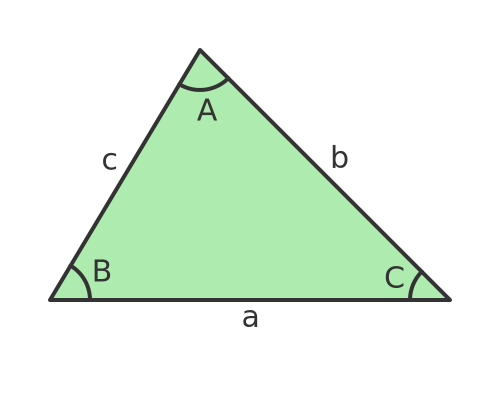
The important thing to remember is that each angle is opposite the side of the same name:
- Angle A is opposite side a.
- Angle B is opposite side b.
- Angle C is opposite side c.
The sine rule
The sine rule tells us that:
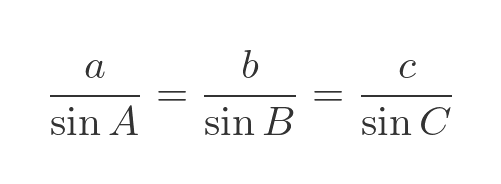
This is a short way of writing these three equations:
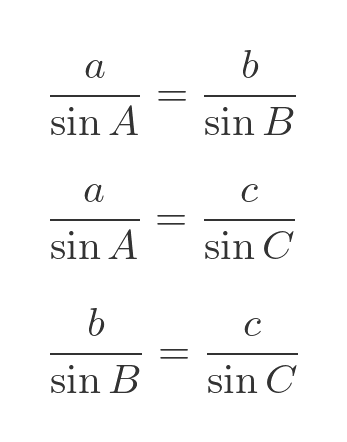
We can also flip these equations so that the sines are on top:
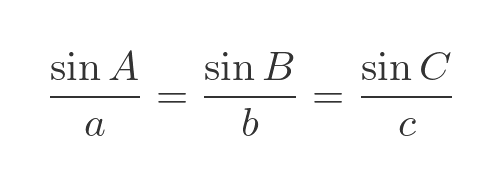
This second form can be useful if you want to find an angle.
Example 1
In this triangle, angle A is 70°, side a is 12 cm, and side b is 9 cm. Find angle B to 3 significant figures:
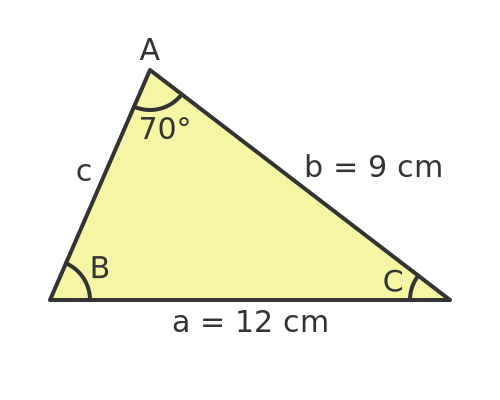
We know two sides and an angle, so we can use the sine rule to solve the triangle. And since we are trying to find an angle, it is easier to use the form with the sines on top:

We can add our known values, A, a, and b. We aren't interested in side c or angle C so we can drop that term:
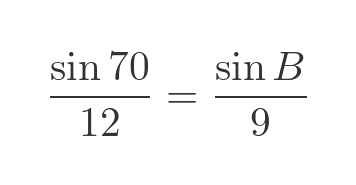
Rearranging the formula to solve for sin B gives:
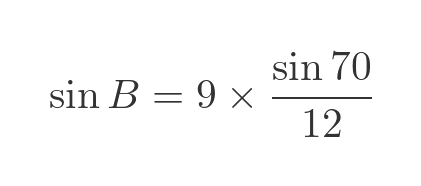
Now we can find sin B:

We can find angle B using the inverse sine function:

So B is 44.8° to 3 significant figures.
Example 2
In this triangle, angle A is 100°, angle B is 30°, and side a is 4 m. Find side c to 3 significant figures:
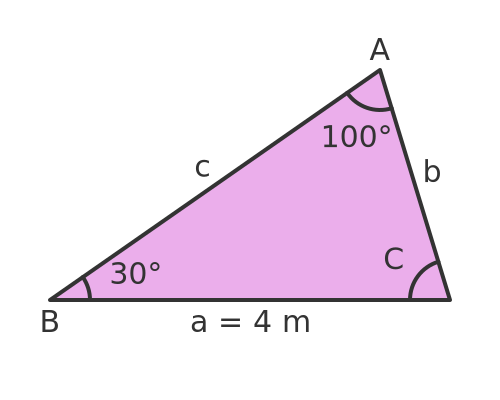
We know two angles and a side, so we can use the sine rule to solve the triangle. And since we are trying to find a side, it is easier to use the form with the lengths on top:

We can put in our know values A, B, and a:
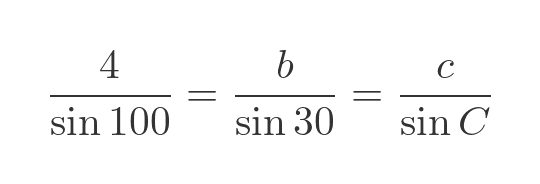
The problem here is that we are trying to find c but we don't know the angle C. But we do know A and B, and we know that all three angles in a triangle add up to 180°, so we can find C:

This means C is 50°. Putting this value into the sine rule equation gives:
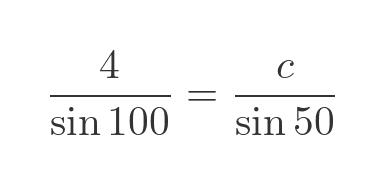
We have dropped the term in b because it isn't needed. We can solve for c like this:

So the side c is 3.11 m to 3 significant figures.
Proof of the sine rule
To prove the sine rule, we first draw a perpendicular line from A to the base of the triangle. This line has length h:
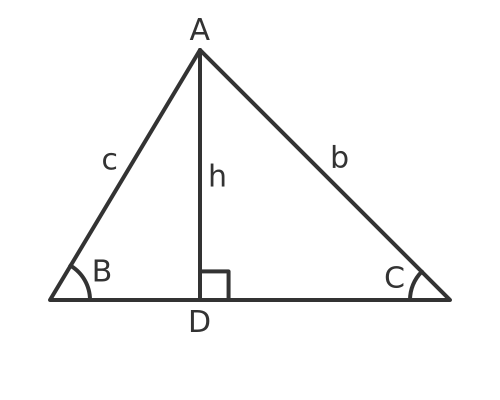
The triangle ABD is a right-angled triangle with angle B, hypotenuse c, and opposite side h. From the definition of sine, we know that:
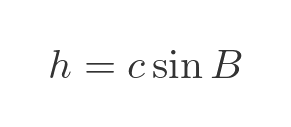
The triangle ACD is another right-angled triangle with angle C, hypotenuse b, and opposite side h. This time we have:
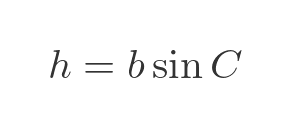
Since both equations have h on the LHS we know they are equal:

Dividing both sides by bc gives:
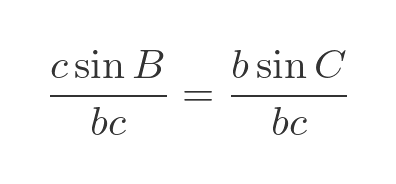
Cancelling c top and bottom on the LHS, and b top and bottom on the RHS gives:
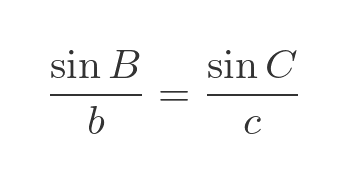
This is the first part of the sine rule, in its flipped form from above.
Now we can repeat the same process, this time drawing a perpendicular line from B to the opposite side. The perpendicular has length g:
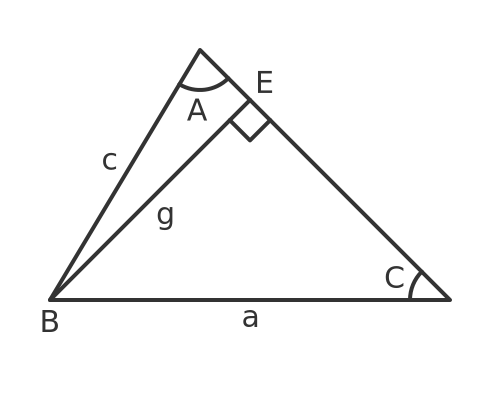
If we look at the two right-angled triangles BAE and BCE, similar to the previous case, it gives us the following equations:

Following the same process as before we can use this to show that:
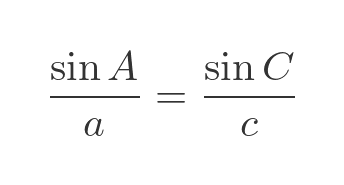
Since this equation and the previous equation both have the same term in sin C, we can combine them to prove the sine rule:

See also

Join the GraphicMaths Newletter
Sign up using this form to receive an email when new content is added:
Popular tags
adder adjacency matrix alu and gate angle answers area argand diagram binary maths cartesian equation chain rule chord circle cofactor combinations complex modulus complex polygon complex power complex root cosh cosine cosine rule cpu cube decagon demorgans law derivative determinant diagonal directrix dodecagon eigenvalue eigenvector ellipse equilateral triangle euler eulers formula exercises exponent exponential exterior angle first principles flip-flop focus gabriels horn gradient graph hendecagon heptagon hexagon horizontal hyperbola hyperbolic function hyperbolic functions infinity integration by parts integration by substitution interior angle inverse hyperbolic function inverse matrix irrational irregular polygon isosceles trapezium isosceles triangle kite koch curve l system line integral locus maclaurin series major axis matrix matrix algebra mean minor axis n choose r nand gate newton raphson method nonagon nor gate normal normal distribution not gate octagon or gate parabola parallelogram parametric equation pentagon perimeter permutations polar coordinates polynomial power probability probability distribution product rule proof pythagoras proof quadrilateral questions radians radius rectangle regular polygon rhombus root sech segment set set-reset flip-flop sine sine rule sinh sloping lines solving equations solving triangles square standard curves standard deviation star polygon statistics straight line graphs surface of revolution symmetry tangent tanh transformation transformations trapezium triangle turtle graphics variance vertical volume volume of revolution xnor gate xor gate